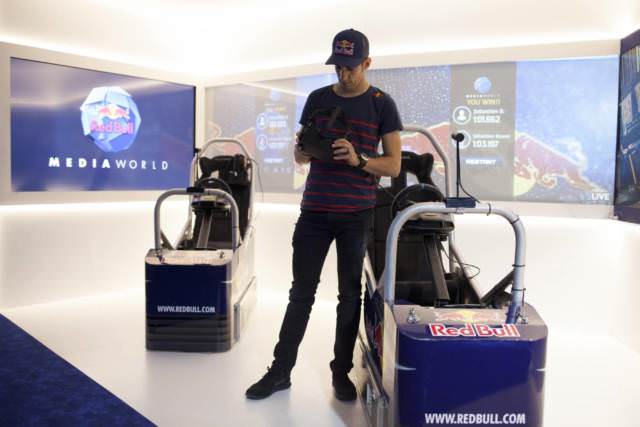
Practically every horror fan has claimed that they can survive or outsmart a movie monster, or has pointed out the mistakes that the protagonists make. Behavior Interactive challenges those fans to put their skills and knowhow to the test with the game Dead by Daylight.
In Dead by Daylight, four survivors must work together to outwit and escape an unstoppable killer that’s coming for them. The killer can be any one of 10 different characters, equipped with signature weapons and abilities that enable them to hunt down the group. Although the killer may be impeded by clever players, he can never be stopped, and the survivors can never go on the offensive.
Recent additions to the game have come from classic horror movies, beginning with Michael Myers from the Halloween franchise as well as with movie protagonist Laurie Strode as a survivor. Other movie killers include Leatherface from The Texas Chainsaw Massacre. More recently, Freddy Kruger from A Nightmare on Elm Street showed up with Quentin Smith as a new survivor.
“We always wanted a game where you could play as the villain,” said Mathieu Côté, game director at Behavior Interactive, explaining to AListDaily how the developer came up with the concept. “We prototyped a few things and somehow ended up with a hide-and-seek game, and the mechanics and tension that created let us know that we had something fun. So, we mixed those two together and created a world that’s inspired strongly by the 1970s and 1980s slasher movies. It’s an absolutely unfair game, where four survivors are trying their best to repair generators, open a door and get out while a killer is mercilessly chasing them down.”
Although having movie characters adds extra personality to Dead by Daylight, it’s the unpredictability of the game that keeps players coming back for more. The maps are procedurally generated, and survivors don’t know which killer they’re facing until they come face-to-face with him, creating a tremendous sense of uncertainty. Killers are also controlled by players instead of an artificial intelligence. Côté said that there’s no better intelligence than real people. They create a tension that’s impossible to replicate using AI.
“Playing against other players will always keep it fresh,” said Côté.
As it turns out, a horror movie survival game is as much fun to watch as it is to play. It’s also driving awareness to the game.
“The biggest motor we’ve had so far has been Twitch streamers and YouTubers,” said Côté. “Mostly, it’s a good show. These people play the game and they’re genuinely reacting. The stress and tension created by the game make for an entertaining show, and they’ve been growing their viewer base because of that, bringing the game to the attention of many more people.”
According to Côté, even though the studio has done numerous interviews at Comic-Con and other events, things still come down to that close one-to-one relationship with its community. The developer hosts weekly livestreams on Twitch, and Côté said that the company is present on the Steam forums and Reddit.
Bringing in licensed killers wasn’t done on a whim, as Côté said that Behavior had always wanted to bring in iconic characters but felt that it had to establish its own story and lore first. The studio then got in touch with license holders about bringing characters into the game, and in some cases, the license holders approached them.
Characters like Michael Myers must fit certain criteria, including having a physical presence, which precludes ghosts but doesn’t necessarily disqualify Freddy Krueger.
“We needed to make sure that whatever deal we did would pay respect to the beloved characters we were bringing in,” said Côté. “They also had to make sense in our world by stepping into our world and exercise their power without having to change them too much.”
Côté also explained why the original characters were chosen instead of ones from recent movie franchise reboots.
“We talked to a few people—and maybe it’s because of my age, but the original Michael Myers from the 1979 movie was what we were hoping to get,” said Côté. “He’s the iconic villain and the one who started it all. Same thing with Leatherface. We went with the 1974 movie because it broke ground, established things that didn’t exist before, and he was the original. We could have gone a different way, but for us, this was the best resolution possible.”
The studio also worked closely with the movie license holders to ensure that the killers had an authentic feel.
“For Michael Myers and Leatherface, we were lucky enough that they (the studios) were very involved and interested in what we were doing,” Côté explained. “There was a lot of back-and-forth. In the case of Myers, they were able to show us images from Haddonfield that weren’t in the movie. They were recon shots and reference materials that gave us much more detail, since the movie is lit in a very cinematic way, so a lot of those details are difficult to know.”
Despite how some of these characters have been around for more than 40 years, they still maintain a strong grip on people’s imaginations. It seems as though they’re unkillable on a number of levels. Côté believe that these characters endure because they broke new ground when they first appeared.
“The impact they had at that moment sent ripples that still haven’t died down,” he said. “They were smartly designed, and they tapped into some of our core fears—things that everyone is afraid of—the guy with the mask, who could be anybody and anywhere. The dehumanization of the mask works well for Myers, and Leatherface is the same kind of principle.
“In a sense, Leatherface is scary for a completely different reason. He’s not evil or a monster. He’s a big, scared child that doesn’t understand and wants to protect his family. That’s scary because he’s a wild and powerful force, and you don’t know when he’s going to go off. But in a sense, you can still feel for him. There’s a good mix of alien and familiar concepts.”
Although the characters have been around for decades, these movies may seem to have a uniquely North American appeal. However, Côté said that Dead by Daylight has a strong global audience, and the way the company engages with that audience is through the survivors.
Many of the original survivors were inspired from the company’s home city of Montreal. The studio is working to diversify its characters, which is why it’s important for the game to continue developing its own characters, stories and lore. Some of the newer survivors include a Brit, a person from Argentina and a woman from China. Additionally, one of the non-licensed killers is The Huntress, inspired by Eastern European and Russian folklore.
Côté said the game worked to go beyond the horror movie tropes found in movies like A Cabin in the Woods—stereotypical horror movie characters like the athlete, nerd and virgin. The original characters wore shirts denoting their roles, but that concept was later abandoned.
“It was fun, but we thought it was a little limiting,” said Côté. “Also, some of these tropes still perpetuate cultural archetypes that we’re not really fond of, so we didn’t think we needed them. Instead, what we decided to do was create characters that are real people. You wouldn’t blink if you bumped into them on the street because they look like you and me. We also made sure they were all adults, so there are no kids or teenagers. Most importantly, we wanted to create characters that you could empathize and identify with. They’re much rooted in modern culture, inspired by people from around the world.”
It’s this kind of engagement, coupled with the sense of uncertainty, that creates a sense of tension and keep players coming back for more.
“[It’s about] hiding and not knowing if they’re going to catch you or not,” said Côté. “The fact that you don’t know how the map is going to turn out or who you’re up against. You don’t know if the player is good or not. Those moments, where your hiding behind a tree and the killer misses you, then turns around and spots you, creates a genuine reaction. Your palms will get sweaty and your hearts races. This still happens when players are a thousand hours into the game.”


